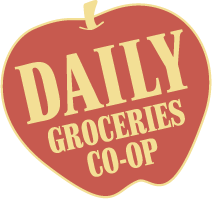On Tuesday, November 19th, Daily took a trip out to Ladybird Farm. Here’s a short write up of our trip.
You can find Ladybird produce stocked on co-op shelves all year round!
LADYBIRD FARM
Sydney and Derek, Farmers & Owners
Driving out to Ladybird Farm is an easy twist of dirt roads. Pulling in and parking by the towering magnolia tree makes arriving at the farm feel particular, sturdy and steady.
We’re greeted by a quick barked hello from Ladybird, the namesake of Ladybird Farms, a Bluetick Coonhound with a spark of mischief. She ambles up as the official mascot, joined by her sibling, Gus, while we take stock of the farm.
It’s a textbook fall day with crisp air and copper leaves. The farm winds around itself, every corner revealing another row of color; green and red climbing up from the ground in true fall spirit. It’s a big operation of seemingly endless produce packed into a small slice of land.
Cabbage. Kale. Turnips. Chard. Cauliflower. Carrots. Broccoli. Beets. Garlic. Fennel. Lettuce.
And then you turn to see another field of well-spaced rows, leaning out between trees.
Sydney and Derek, the purveyors of Landbird Farm, are just as charming as you would expect them to be. They’re the type of folks you can imagine building a really fantastic campfire. And the chances of that are good since fire-pits are tucked here and there around the property, telling stories about stories between tractors and greenhouses.
Our produce team, Jim and Shelley, look like kids in a candy shop as we’re stepping through the rows of greens. We talk about choosing crops according to the land, according to the shapes of shade trees, where summer lettuce can thrive but potatoes will get leggy. Shelley gives the word covet fresh meaning when she catches sight of the deer fence outlining the property.
Poking our heads through the seeding greenhouse marks a change in temperature, and just as quickly Sydney and Derek are out again jogging around the side after a small cat (“Oh! There she is!” “The one from earlier?” “Yes! I knew I saw one out here!” “OH! A SIAMESE!”).
Then we’re back to it, gathered around drying okra propped at a 45° angle, looking more like a found-item sculpture than a means to an end.
Moving back out under a giant magnolia, we find the processing station. An old tub on a metal stand, a washing machine that’s been converted into a salad-tosser. The whole farm is filled up with touches of elbow-grease, coming together to lead us through a collected parcel of ingenuity and cohesion - no small feat for a farm that’s only a little over a year in.
Then there’s more talk between the farmers of the group about drainage, compost, and soil health, jokes about the stools folks use when harvesting strawberries, and questions about metal vs plastic trellises (plastic’s easier to store and easier to work with; metal is more frustrating - “We get angry!” “Mhm! ..Quickly!”)
As we start making our way back toward Sydney and Derek’s home, we start to wonder after Penne, one of many beloved farm cats. And so the search begins: Where in the World is Penne? Pear tree? Magnolia tree? Barn? Then an ah-ha! And here she is. Once again, all is well; all is in its place. Penne scrambles around Sydney’s shoulders and is holstered in Derek’s overalls.
The rest of the cats, Linguine, Pasta Salad, Macaroni, the Siamese from earlier now tentatively named Udon, napping in the distance.
So we trek back to the co-op, talking about fences and cauliflower. Thinking fondly of our farmers, ready to await Derek’s upcoming delivery of kale.










